The ins and outs of physical activity
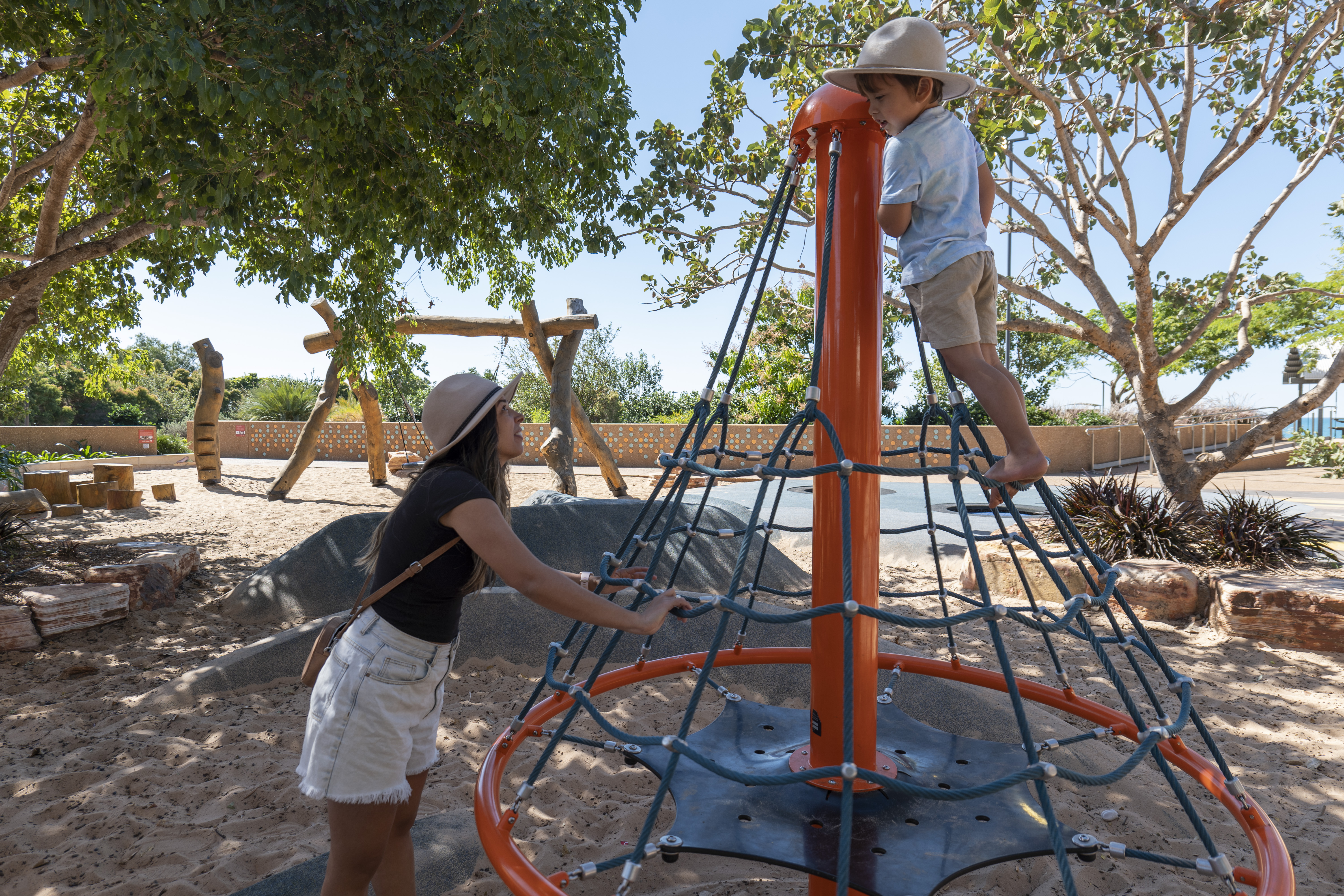
Physical activity is hugely beneficial and essential for child development, yet most children (74%) aren’t getting enough movement in their day.
Physical health benefits for kids include:
- Increasing bone, muscle, heart, and lung strength
- Improving coordination, balance, posture, and flexibility
- Supporting growth
- Maintaining a strong immune system
There are loads of broader benefits too! Being active can teach them to:
- Feel calmer and more relaxed
- Have good self-esteem and feel confident
- Enhance language and communication skills
- Share, take turns and cooperate
- Form social connections and feel a part of a community
We’re all using more screens and spending more time in sedentary activities, and it’s crucial that we encourage physical activity in the early years. This helps our children grow, develop, and build healthy habits that will set them up for life.
What is physical activity?
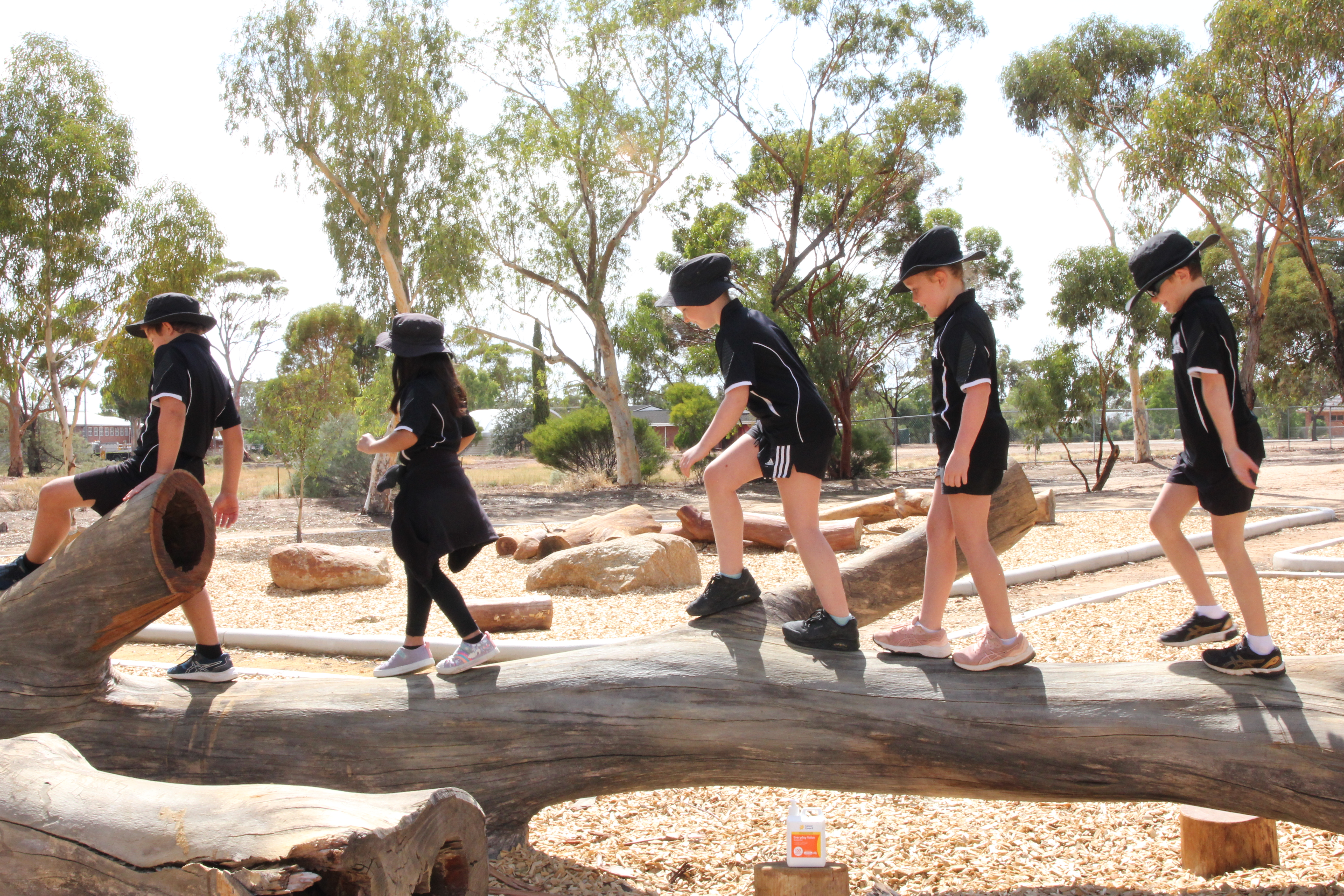
Physical activity is simply moving our bodies. This can be anything from walking, tidying up toys, water play, running around the backyard, or playing team sports. Physical activity can be classified as light, moderate, vigorous, or strength-based.
Light physical activity requires little effort and doesn't noticeably change heart or breathing rate. These activities could include strolling, standing up and petting a dog, or watering the garden.
Moderate physical activity requires more effort causing a little change in breath. Examples include:
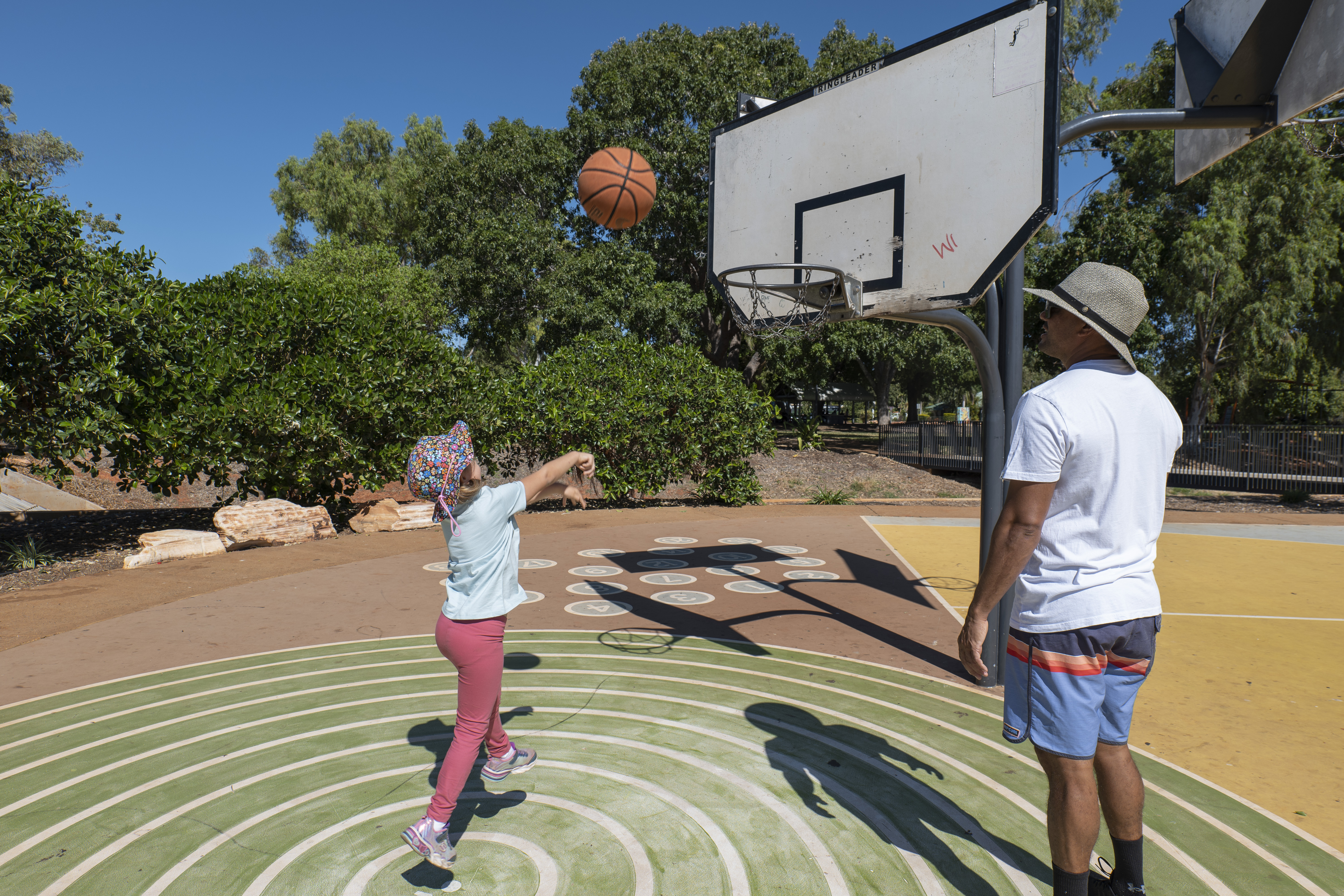 |
|
Vigorous physical activity requires the most effort and will increase heart rate, as well as cause huffing and puffing. Examples include:
|
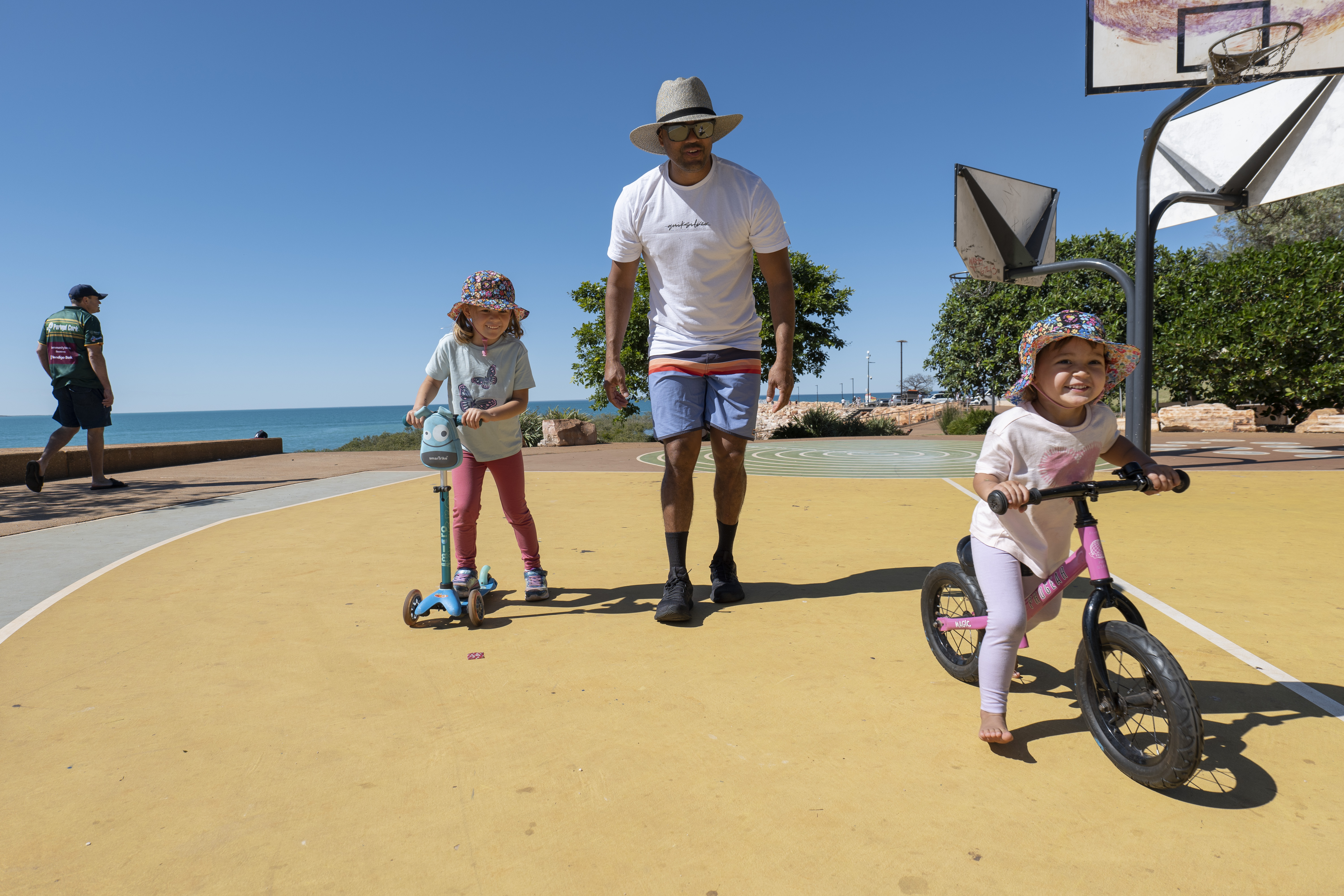 |
Strength-based physical activities help build strong muscles and bones; examples include climbing, swinging on monkey bars, and yoga.
How much physical activity do kids need?
According to the Australian guidelines:
- For 3 to 5-year-olds, aim for at least three hours of movement every day, with one hour being energetic play (that vigorous physical activity mentioned earlier).
- For 5 to 12-year-olds, aim for at least one hour of moderate to vigorous activity every day, and include strength activities at least three days per week.
When introducing new ways to be physically active, check-in and ask children how it makes them feel, and invite them to experiment with different ways to move their bodies. Physical activity is a fun way to develop new skills!
If you are looking for a fun activity to get them started, try our printable fitness dice!
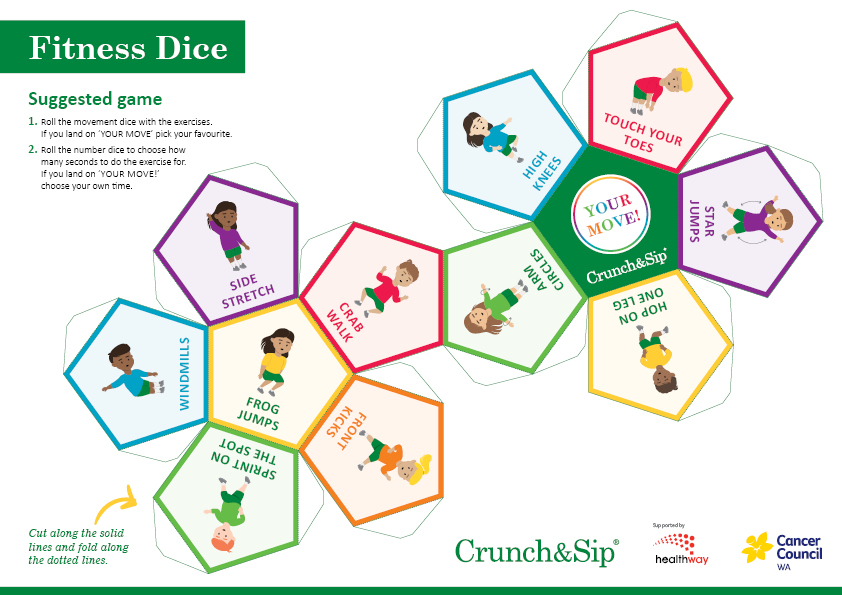 |
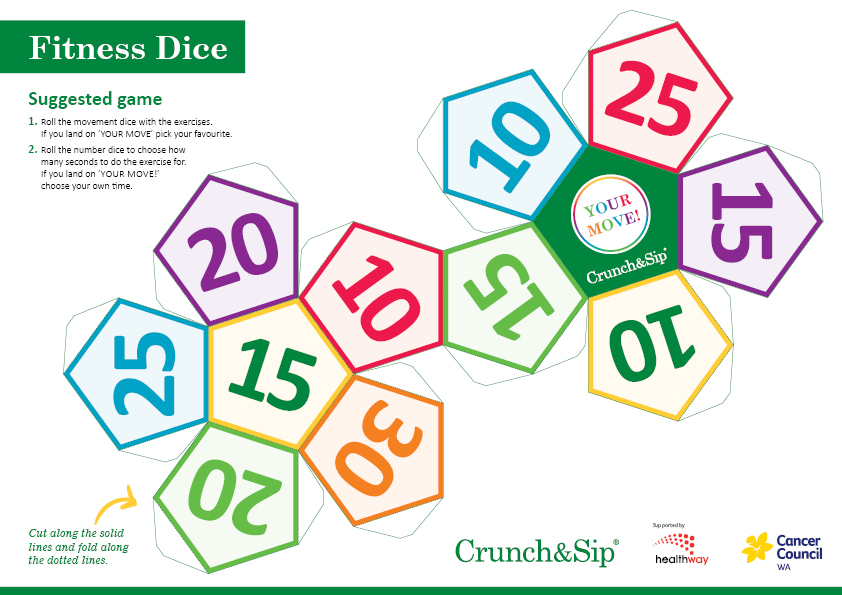 |